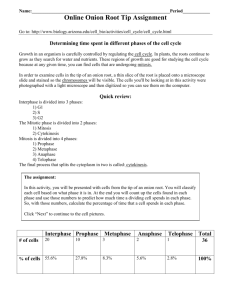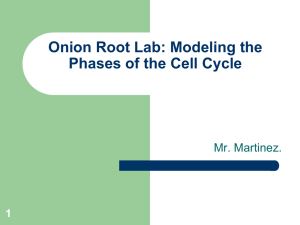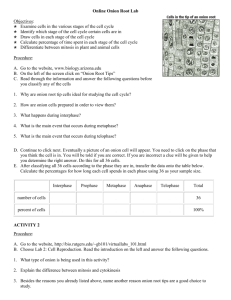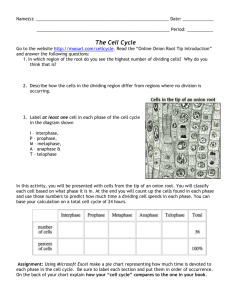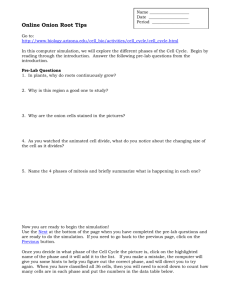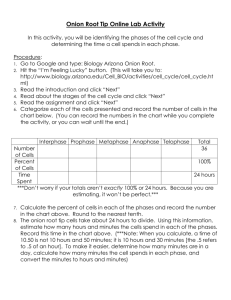osmosis lab - wahsbiology
advertisement
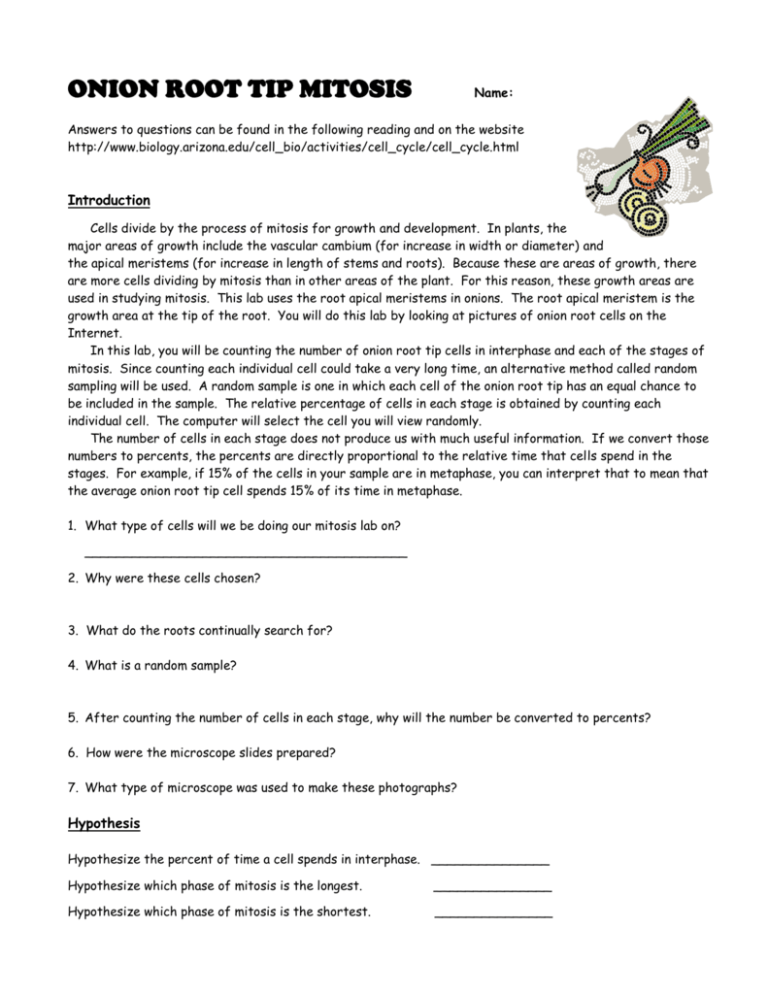
ONION ROOT TIP MITOSIS Name: Answers to questions can be found in the following reading and on the website http://www.biology.arizona.edu/cell_bio/activities/cell_cycle/cell_cycle.html Introduction Cells divide by the process of mitosis for growth and development. In plants, the major areas of growth include the vascular cambium (for increase in width or diameter) and the apical meristems (for increase in length of stems and roots). Because these are areas of growth, there are more cells dividing by mitosis than in other areas of the plant. For this reason, these growth areas are used in studying mitosis. This lab uses the root apical meristems in onions. The root apical meristem is the growth area at the tip of the root. You will do this lab by looking at pictures of onion root cells on the Internet. In this lab, you will be counting the number of onion root tip cells in interphase and each of the stages of mitosis. Since counting each individual cell could take a very long time, an alternative method called random sampling will be used. A random sample is one in which each cell of the onion root tip has an equal chance to be included in the sample. The relative percentage of cells in each stage is obtained by counting each individual cell. The computer will select the cell you will view randomly. The number of cells in each stage does not produce us with much useful information. If we convert those numbers to percents, the percents are directly proportional to the relative time that cells spend in the stages. For example, if 15% of the cells in your sample are in metaphase, you can interpret that to mean that the average onion root tip cell spends 15% of its time in metaphase. 1. What type of cells will we be doing our mitosis lab on? _________________________________________ 2. Why were these cells chosen? 3. What do the roots continually search for? 4. What is a random sample? 5. After counting the number of cells in each stage, why will the number be converted to percents? 6. How were the microscope slides prepared? 7. What type of microscope was used to make these photographs? Hypothesis Hypothesize the percent of time a cell spends in interphase. _______________ Hypothesize which phase of mitosis is the longest. _______________ Hypothesize which phase of mitosis is the shortest. _______________ Procedure 1. Click next at the bottom of the page until you see a picture of an onion root tip cell on the left. 2. You will be presented with 36 cells and you will classify each cell based on what phase it is in. 3. Enter your data on the table below. 4. Combine your data with another person. If you are working alone, use your data twice. 5. Find the percent of cells: Total number of cells in the stage Total number of cells (72) Data Interphase Prophase Metaphase Anaphase x 100 = Telophase Number of Total 36 cells Others 36 person’s data Total number 72 of cells Percent of 100% cells Analysis and Conclusion 1. What percent of time does an onion root tip spend in interphase? ____________ 2. What percent of time does an onion root tip spend in the other stages of mitosis? ____________ 3. Do you think the percent is the same for the leaves and flowers? Why? 4. Which stage of mitosis does an onion root tip spend most of its time in? ____________ 5. Why do you suppose this stage lasts the longest? 6. Which stage of mitosis does an onion root tip spend the least amount of time in? ____________ 7. Why do you suppose this stage is the shortest?

